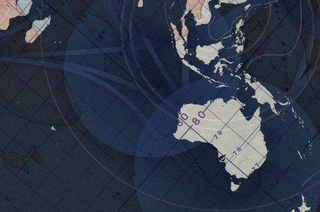On 6 August, US President Donald Trump announced an additional 25 percent tariff on Indian goods, citing New Delhi’s “direct or indirect importation of Russian Federation oil.” India’s purchases “undermine US efforts to counter Russia’s harmful activities…. necessitating stronger measures to address the national emergency,” the statement said.
It follows Trump’s decision to impose a 25 percent “reciprocal tariff” on Indian imports to the US, which took effect on August 7. Together with the new import tax, effective 27 August, duties on some Indian exports will be as high as 50 percent — among the highest levied on any US trading partner.
Following the announcement, India’s Ministry of External Affairs released a strongly worded statement describing the actions as “unfair, unjustified and unreasonable.” New Delhi said it would take “all actions necessary to protect its national interests.” Last week, in response to Trump’s allegations that India was “not only buying massive amounts of Russian Oil… (but also) selling it on the open market for big profits,” New Delhi issued a strong statement highlighting how after the “commencement of the Ukraine conflict…. the United States at that time actively encouraged such (oil) imports…for strengthening global energy markets stability.”
When Trump was sworn in as president, there was optimism in New Delhi that India-US relations would soar, given the great personal rapport between India’s Prime Minister Narendra Modi and Trump, which was on display during the latter’s first term. In fact, Modi was one of the first global leaders to be hosted by Trump in his second term.
However, more recent developments, notably the conflicting messaging over Trump’s role as a mediator in the India-Pakistan crisis in May this year, and Washington’s re-hyphenation of New Delhi and Islamabad, has significantly strained India-US ties.
Besides hurting trade with India, Trump’s tariffs are expected to cause a serious setback to the India-US partnership. Reports suggest that New Delhi has already put on hold new weapons and aircraft procurement plans from the United States, although India’s Ministry of Defence has officially denied this.
While New Delhi has so far not announced any action against the US for its tariffs, its moves following the announcement are significant.
This is an opportunity for New Delhi to make strategic choices that don’t compromise its national interests, and to showcase its commitment to strategic autonomy.
Instead of caving in to Washington’s pressure, New Delhi has opted to double down on its ties with Russia. Just a day after Trump’s tariff announcement, India’s National Security Advisor Ajit Doval met with Russian President Vladimir Putin to prepare for the latter’s visit to India. Doval hailed the “strategic and special partnership” with Russia during a “tumultuous situation” in the world.
The following day, Modi spoke with Putin and both sides reaffirmed their commitment to deepen the “Special and Privileged Strategic Partnership.”
New Delhi also seems to be focusing on a diplomatic outreach to East Asia, with Modi set to visit Japan and China later this month. With India-US tensions expected to spill over to multilateral platforms, such as the Quad grouping (Australia, India, Japan, and the United States), Modi’s meeting with Japanese Prime Minister Ishiba Shigeru signals that India’s ties with Japan at the bilateral level will remain unaffected.
Modi’s in-person participation at the Shanghai Cooperation Organization (SCO) summit, his first since 2022, indicates that New Delhi is rethinking its approach toward China, after the 2020 border dispute brought relations to their lowest point in decades. The resumption of tourist visas and the flurry of high-level diplomatic engagements in recent months indicate that New Delhi is adopting a more pragmatic and flexible strategy toward China.
While it remains unlikely that China-India relations will return to what they were pre-2020, Trump’s trade policy targeting both these Asian giants seems to be driving them to a rapprochement.
Trump’s selective targeting of BRICS member nations through tariffs has also provided New Delhi with the impetus to renew its engagement with the grouping. In light of its waning influence within the BRICS grouping, India should use this opportunity to re-engage with the bloc and strengthen its credentials as a Global South leader, as it prepares to take over chairmanship next year. By neglecting the Global South through his “America First” policies, Trump is indirectly aiding the transformation of BRICS — from a loose grouping of countries to one that is increasingly investing among themselves and turning regionally to oppose superpower bloc politics.
India sees itself as a force in global politics, engaging in strategic multi-alignment to secure its national objectives. A long-standing criticism of New Delhi’s foreign policy choices has been that it does not look beyond tactical challenges. This is an opportunity for New Delhi to make strategic choices that don’t compromise its national interests, and to showcase its commitment to strategic autonomy. It is an opportunity for India to be truly strategically multi-aligned, economically diversified, and deeply integrated within the extended region.






